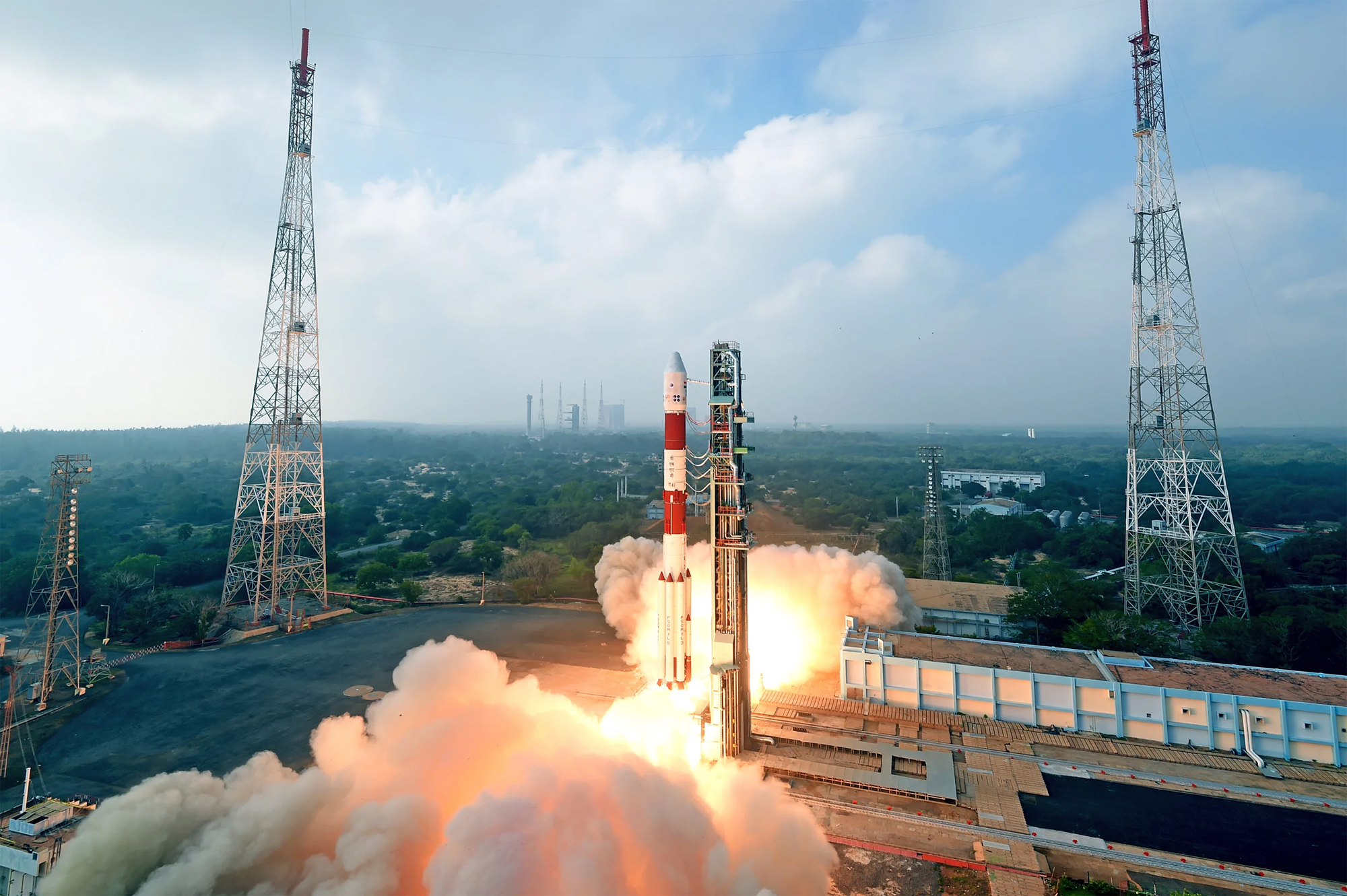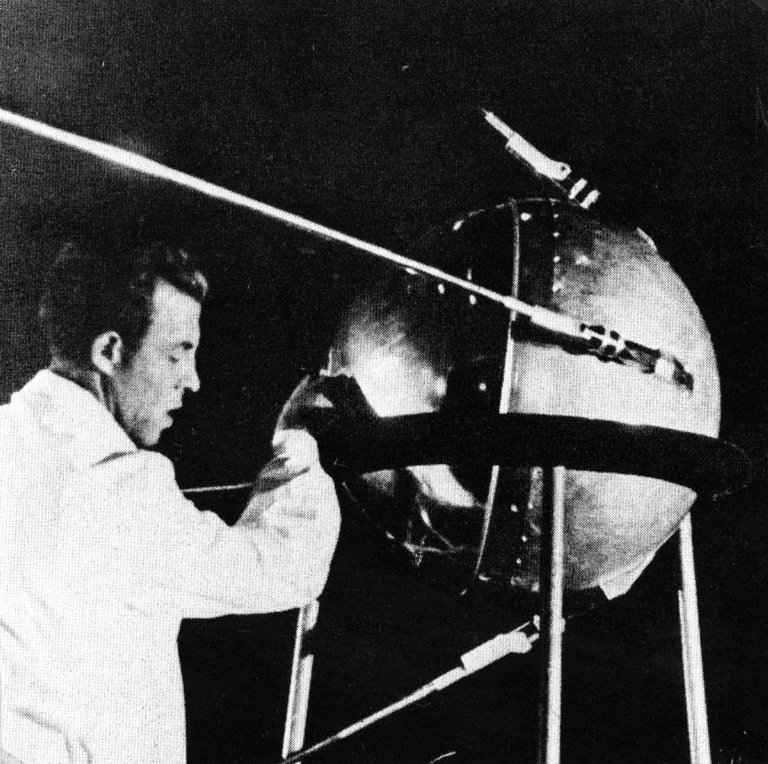Four Cubesats Snuck into Orbit Without Regulatory Approval, FCC Says

Concerns about space junk and satellite-launch regulations are swirling after the Federal Communications Commission (FCC) alleged that a U.S. company launched four tiny satellites without permission.
As first reported in IEEE Spectrum, four miniature satellites called SpaceBee-1, 2, 3, and 4 launched to orbit from India aboard a Polar Satellite Launch Vehicle (PSLV) rocket in January, along with several dozen other cubesats and an Indian Earth-observing spacecraft.
Launch documents did not identify the SpaceBees' operator. But the documents' description of the four satellites matches information that a California-based company called Swarm Technologies filed in an application to the FCC last year. In the application, the company noted plans to launch four satellites on that same rocket and referred to the satellites as "Space BEES." [In Photos: India's PSLV rocket Launches Cartosat-2 Satellite & 30 More!]
The FCC declined to comment for IEEE Spectrum's article, and the publication stated that Swarm Technologies did not respond to interview requests. But launch-services provider Spaceflight Industries confirmed to SpaceNews that it integrated the SpaceBees onto the PSLV for Swarm.
Spaceflight Industries representatives told SpaceNews that the responsibility for getting the necessary FCC approvals lies with a satellites' developer.
"I always assumed that people wouldn't launch something if they couldn't" get those approvals, Curt Blake, president of Spaceflight Industries' launch services group, told SpaceNews. "I thought that would be sort of a self-regulation function."
On March 7, IEEE Spectrum reported, the FCC sent a letter to Swarm Technologies setting aside a grant to expand Swarm's satellite program, pending further review. The reason: "to permit assessment of the impact of the applicant's apparent unauthorized launch and operation of four satellites," according to the letter.
Get the Space.com Newsletter
Breaking space news, the latest updates on rocket launches, skywatching events and more!
Space junk concerns
Swarm Technologies is operating in stealth mode; its website reveals little information about the company's plans. The one-page site simply states that Swarm will offer "the world's smallest two-way communication satellites."
Some more data is available via Swarm's FCC application for the launch. There, the company said the goal of the SpaceBee mission is "a technology demo for two-way communications satellites, data relay and a new attitude-control system." The target altitude was 360 miles (580 kilometers) — roughly 1.5 times that of the International Space Station, which orbits at an average height of 250 miles (400 km).
But the SpaceBees will sink closer to Earth over time, dragged down by the planet's atmosphere, the application noted. After the satellites' operational phase, they will likely remain in orbit for anywhere from 4.4 to nine years, depending on the final orbit of the satellites and the influence of the sun on Earth's atmosphere.
The FCC grounded the project over worries about the SpaceBees' potential threat to other space assets. The tiny satellites measure 4 inches by 4 inches by 1.1 inches (10 by 10 by 2.8 centimeters), meaning they're just 25 percent as big as a standard "1U" cubesat. That 1.1-inch side makes the SpaceBees too small to be easily tracked by the U.S. military's Space Surveillance Network (SSN), the FCC wrote in a letter dated Dec. 12, 2017. And the satellites would only be able to beam out GPS data during their operational lifetimes. Swarm's proposal to add microwave (Ku-band) radar reflectors to the satellites would be of little help, because just a "small portion" of the SSN uses that band, the FCC letter said. [Cubesats: Tiny, Versatile Spacecraft Explained (Infographic)]
"The ability of operational spacecraft to reliably assess the need for and plan effective collision-avoidance maneuvers will be reduced or eliminated," the FCC wrote. "Accordingly, we cannot conclude that a grant of this application is in the public interest."

Internet of things
Swarm apparently aims to offer a satellite network for the "Internet of Things" (IoT), the universe of devices that are connected to the web. The IoT includes not only computers, tablets and phones, but also connected everyday devices such as refrigerators and thermostats. The U.S. National Science Foundation (NSF) awarded $220,463 to Swarm for an IoT satellite network under the foundation's Small Business Innovation Research program in 2017, according to the NSF website.
"The proposed project addresses the problem that there are no existing low-cost options for sensing, transmitting and connecting devices from remote locations with no cell or Wi-Fi coverage," read the abstract attached to Swarm's proposal. Under the company's proposal, Swarm said, "Scientific, shipping, tracking, automotive, agriculture, energy, medical, educational and other commercial entities will have the ability to return their data from anywhere on the planet to support tracking, safe operations, and optimal and timely decision making."
After the rejection of the mini-satellite proposal, Swarm sent additional applications to the FCC, including one proposal for four larger cubesats (which would launch on a Rocket Lab rocket from New Zealand in April) and a second asking to construct ground stations.
Swarm, which is based in Menlo Park, California, is led by Sara Spangelo, a former worker at NASA's Jet Propulsion Laboratory who then joined Google, IEEE Spectrum reported. The publication added that Benjamin Longmier, Swarm's chief financial officer, co-founded Apollo Fusion (a company that develops electric propulsion for satellites) and a balloon company called Aether Industries, which was eventually sold to Apple.
Follow us @Spacedotcom, Facebook or Google+. Originally published on Space.com.
Join our Space Forums to keep talking space on the latest missions, night sky and more! And if you have a news tip, correction or comment, let us know at: community@space.com.

Elizabeth Howell (she/her), Ph.D., was a staff writer in the spaceflight channel between 2022 and 2024 specializing in Canadian space news. She was contributing writer for Space.com for 10 years from 2012 to 2024. Elizabeth's reporting includes multiple exclusives with the White House, leading world coverage about a lost-and-found space tomato on the International Space Station, witnessing five human spaceflight launches on two continents, flying parabolic, working inside a spacesuit, and participating in a simulated Mars mission. Her latest book, "Why Am I Taller?" (ECW Press, 2022) is co-written with astronaut Dave Williams.









